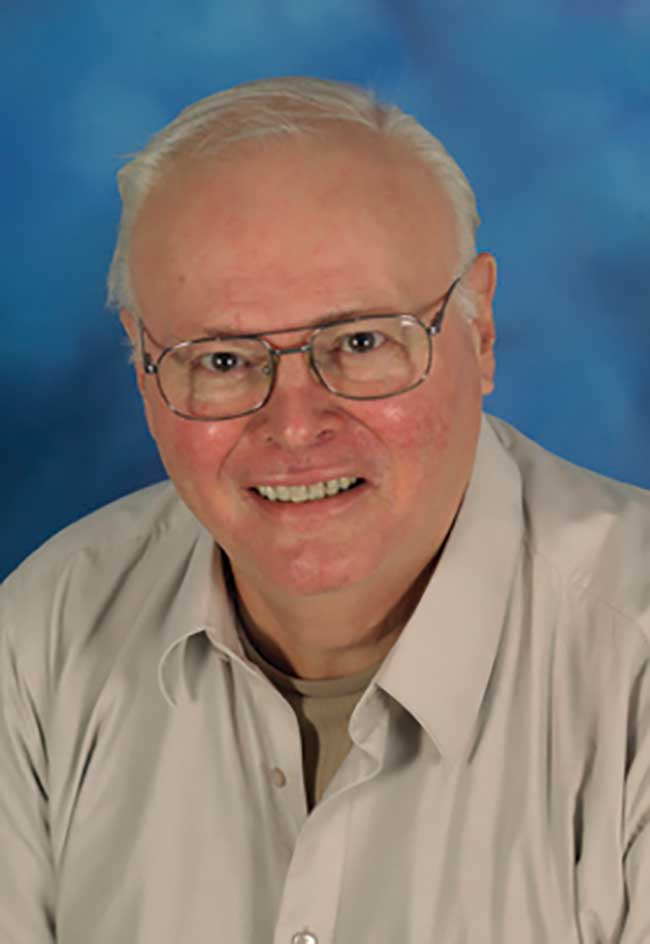Innovation is propelling spectroscopy into new uses in health care, bioimaging and other areas of the life sciences. Among the many fields the advances are poised to improve are the diagnosis and understanding of diseases such as cancer and Alzheimer’s.
 Photonics Media spoke with Robert R. Alfano, a distinguished professor of science and engineering at the City College of New York and director of its Institute of Ultrafast Spectroscopy and Lasers, about the progression of such novel technologies, as well as the state of the global spectroscopy market, its anticipated growth and the driving forces behind it.
Photonics Media spoke with Robert R. Alfano, a distinguished professor of science and engineering at the City College of New York and director of its Institute of Ultrafast Spectroscopy and Lasers, about the progression of such novel technologies, as well as the state of the global spectroscopy market, its anticipated growth and the driving forces behind it.
Q: What are some spectroscopy-related technology trends you are seeing?
There are several novel ways spectroscopy offers advancements of knowledge. Innovations in novel optical spectroscopy imaging techniques promise noninvasive deep tissue diagnostic tools and understanding on [a] fundamental level of solving some key diseases such as cancer and Alzheimer’s disease.
Deep imaging in biomedical materials with linear and nonlinear optics offers the key to unraveling the physics, chemistry and biology of cancer and brain diseases such as Alzheimer’s. The combination of optical spectroscopy — fluorescence, Raman and multiphoton methods [like] SHG (second-harmonic generation) and 2PEF (two-photon excitation fluorescence) — with treatment is the next stage of optical biopsy.
Resonance Raman using 532 nm — coined [the] “magic wavelength” — and other well-selected visible wavelengths offer larger and faster signals for use in units with higher S/N, such as skin cancer with ablation. Emerging novel optical imaging techniques include stimulated Raman gain for vibrations states of lipids and proteins of brain [diseases] and cancer to form 2D and 3D nonlinear optical tomography of tissues and cells. The use of the photon basic unit of light offers a unique opportunity via its many properties to understand cancer and brain mysteries on a more fundamental level.
The new NIR and SWIR windows in tissue offer transparent zones with less scattering and improved images in scattering media such as tissues for single
and 2PEF microscopes. The advent of SWIR detectors over silicon photo CMOS and CCD will advance imaging in the 1700 nm [range], the golden window for best penetration and diagnosis.
The use of UV spectroscopy on the cell level will see how the nucleus DNA and RNA communicates with the cell components in metabolism.
The use of the supercontinuum laser light in microscopes for resonant processes offers a new horizon in understanding linear and nonlinear process in biomedical media for better image resolution.
The quantum mechanics of entanglement and squeezing offer novel modality for action in brain communication and higher spatial resolution.
The use of light for probing and imaging biomedical media [is] promising for the development of safe, noninvasive and inexpensive clinical imaging modalities with diagnostic ability [for] cancer, brain disorders and how memory takes place.
Ultrafast laser spectroscopy adds time to study the temporal energy pathways in the molecular world on biomedical media among the basic building blocks in tissues and cells.
Q: Do you have any insight into the state of the spectroscopy market? Specifically, what type of growth is anticipated, and in which sectors of this market?
The market size is huge. The 2PEF microscope market since 2005 grew to $7 billion today. The supercontinuum microscope, a more advanced version of the nonlinear optical microscope, offers more applications and similar market from resonant effects. Optical biopsy still needs a champion company to enter the marketplace for smarter medical tools to build a new armamentarium in endoscopy and GYN (Cervix) optical Pap and GI. One can envision optical biopsy spectroscopy in surgery for margins in detection of cancer. The multibillion dollar success of OCT of optical biopsy is only the beginning for smart, less invasive medical tools.
Q: As someone immersed in this field, and based on current market trends and technological development, what do you anticipate for the future of spectroscopy?
I envision optical biopsy spectroscopy technologies — such as 1PEF, 2PEF, SHG, resonance Raman, NIR and SWIR imaging — to enter the clinical area and commercial marketplace in ways such as, for example, smart refrigerators and food optical detectors for home use. Also, the search for the Holy Grail of detecting glucose in a bloodless [noninvasive] way may be solved.